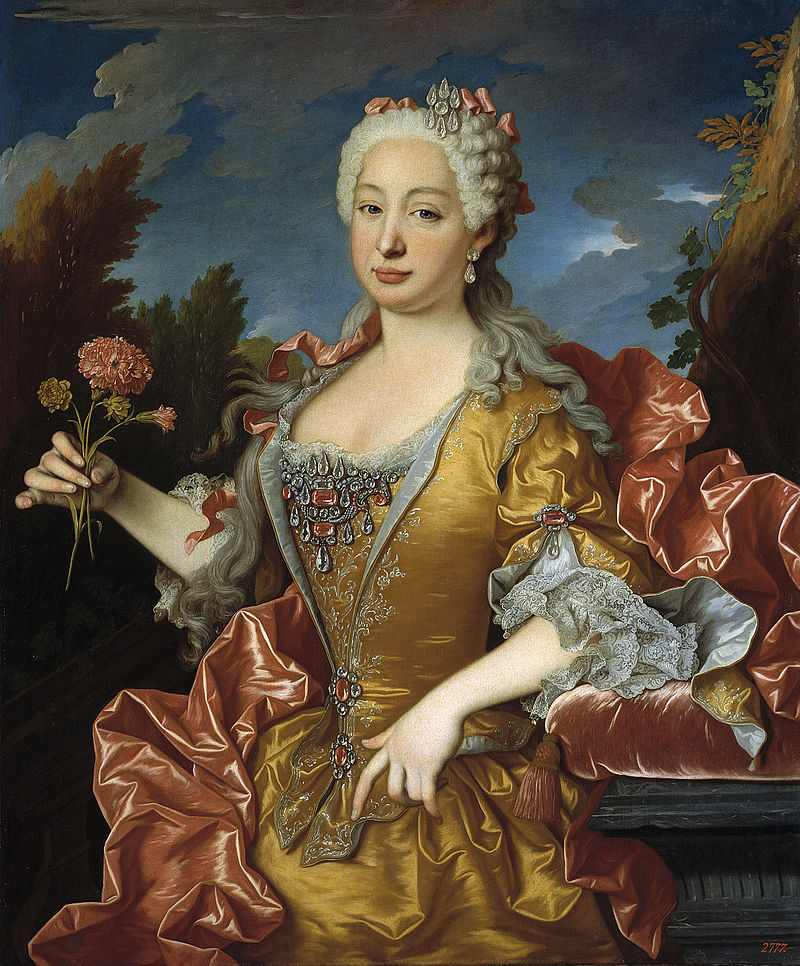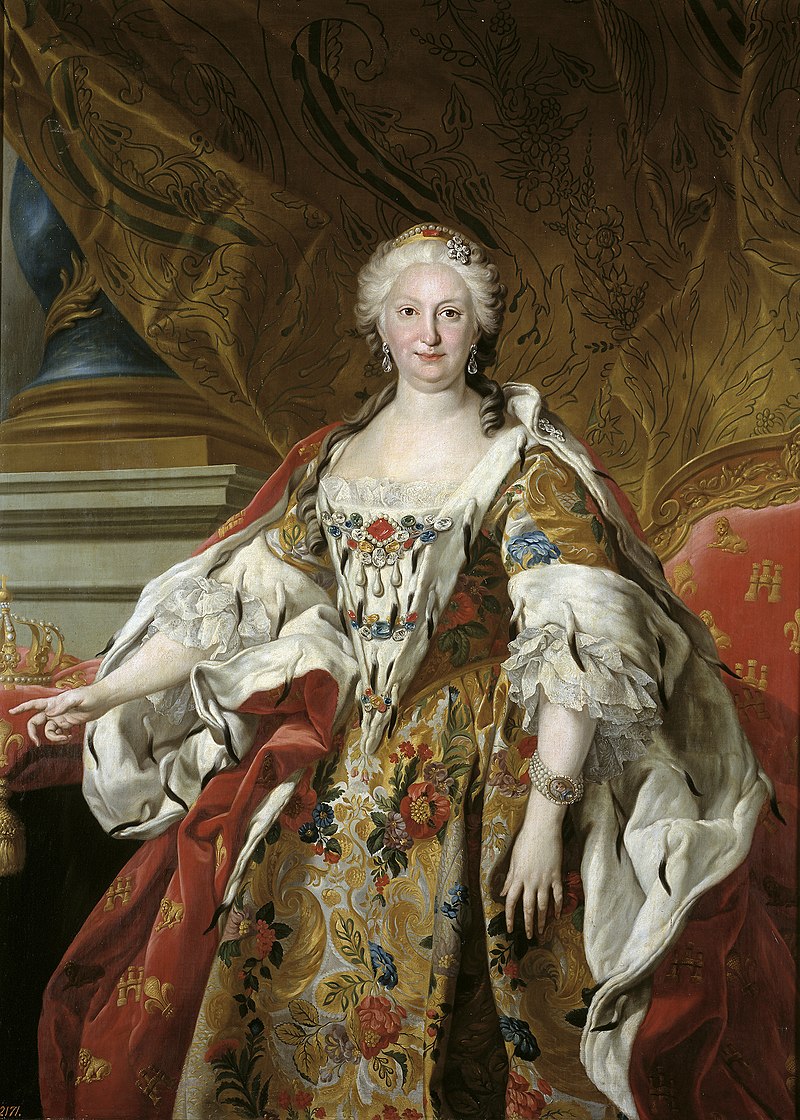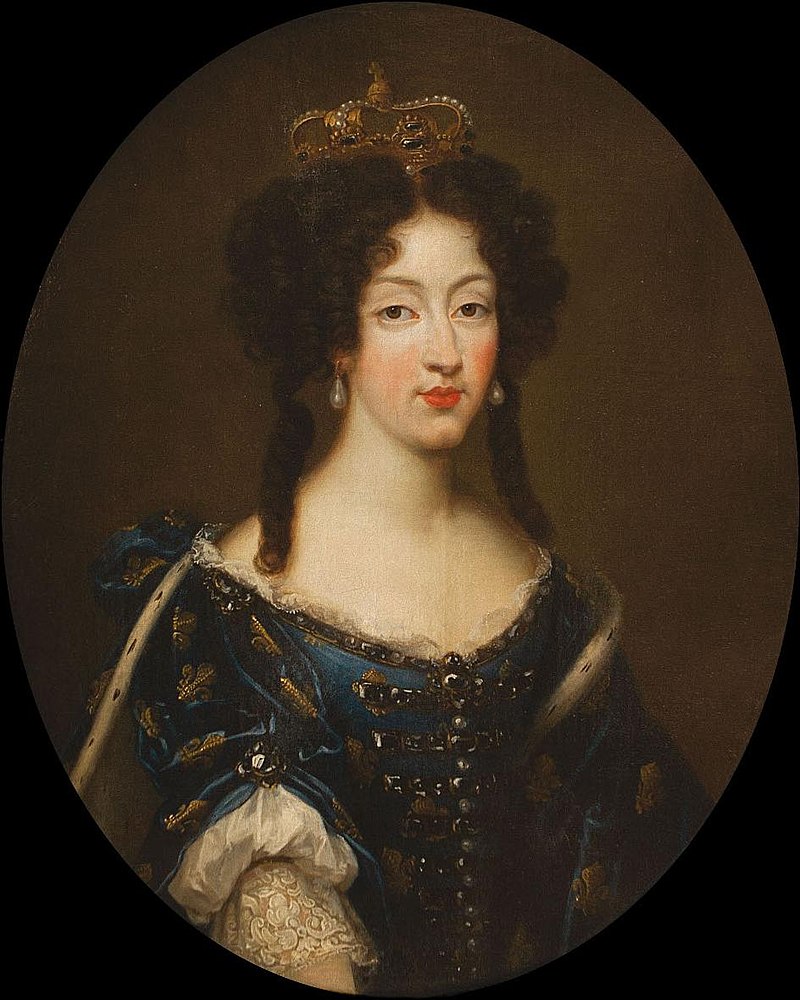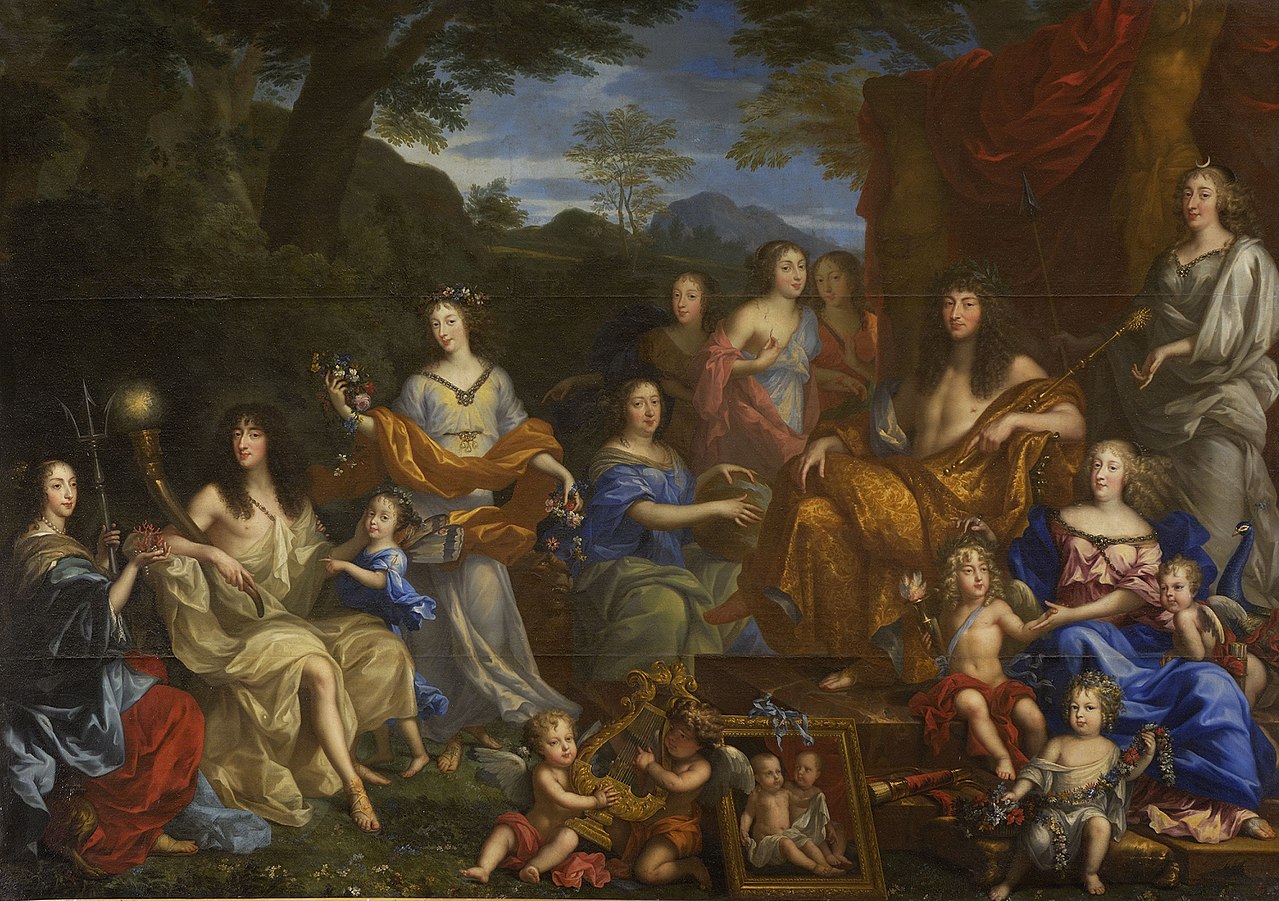by Susan Flantzer
© Unofficial Royalty 2023
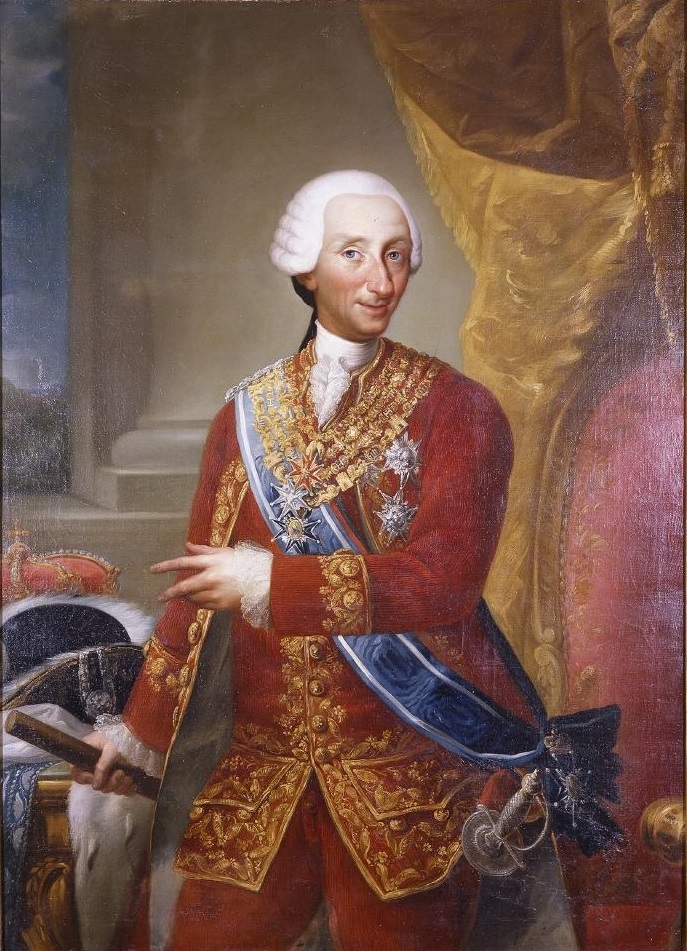
Carlos III, King of Spain; Credit – Wikipedia
Born Carlos Sebastián, on January 20, 1716, at the Royal Alcazar of Madrid in Spain, Carlos III, King of Spain was also Duke of Parma and Piacenza, as Carlo I (1731 – 1735), King of Naples, as Carlo VII (1735 – 1759), and King of Sicily, as Carlo V (1734 – 1759). Carlos III was the eldest of the six children and the eldest of the three sons of Felipe V, the first Bourbon King of Spain and his second wife Elisabeth Farnese of Parma. His paternal grandparents were Louis, Le Grand Dauphin, the heir apparent to the throne of France, and Maria Anna Victoria of Bavaria. Carlos’ maternal grandparents were Odoardo Farnese, Hereditary Prince of Parma and Dorothea Sophie of Neuburg.
Carlos’ father had been born a French prince, Philippe, Duke of Anjou, the second son of Louis, Le Grand Dauphin, who was the son and heir apparent of King Louis XIV of France. In 1700, King Carlos II of Spain, from the House of Habsburg, died childless with no immediate Habsburg heir. Louis, Le Grand Dauphin had the strongest genealogical claim to the Spanish throne because his mother Maria Theresa, Infanta of Spain had been the half-sister of Carlos II. However, neither Louis, Le Grand Dauphin nor his elder son Louis, Duke of Burgundy, Le Petit Dauphin could be displaced from their place in the succession to the French throne. Therefore, King Carlos II of Spain, in his will, named the second son of Louis, Le Grand Dauphin, 16-year-old Philippe, Duke of Anjou, as his successor. He reigned as Felipe V, King of Spain, the first Bourbon monarch of Spain.

Felipe V of Spain with his second wife Elisabeth and some of his children from his first and second marriages – from left to right: the future Fernando VI, King Felipe V, the future Luis I; Felipe, the future Duke of Parma, Queen Elisabeth, a portrait of the Infanta Mariana Victoria, and the future Carlos III: Credit – Wikipedia
Carlos had five younger siblings:
- Mariana Victoria, Infanta of Spain (1718 – 1781), married José I, King of Portugal, had four daughters
- Felipe, Infante of Spain, Duke of Parma (1720 – 1765), Louise Élisabeth of France, founder of the House of Bourbon-Parma, had three children
- Maria Theresa Rafaela, Infanta of Spain (1726 – 1746), married Louis, Dauphin of France, had one daughter who did not survive childhood
- Louis, Count of Chinchón (1727 – 1785), Archbishop of Toledo, Primate of Spain and Cardinal renounced his ecclesiastical titles, married morganatically María Teresa de Vallabriga, had four children
- Maria Antonietta Fernanda, Infanta of Spain (1729 – 1785), wife of Vittorio Amadeo III, King of Sardinia, had twelve children
From his father’s first marriage to Maria Luisa of Savoy, Carlos had four half-siblings:
- Luis I, King of Spain (1707 – 1724), married Louise Élisabeth of Orléans, no children
- Felipe, Infante of Spain (born and died 1709)
- Felipe, Infante of Spain (1712 – 1719)
- Fernando VI, King of Spain (1713 – 1759), married Bárbara of Portugal, no surviving children

Carlos’ parents Felipe V and Elisabeth Farnese in 1739; Credit – Wikipedia
Carlos’ mother Elisabeth Farnese of Parma never showed affection toward her two stepsons Luis and Fernando. She considered her stepsons to be obstacles to achieving her main objective: to provide her sons with realms to rule. On January 14, 1724, Felipe V abdicated the Spanish throne to Luis, his seventeen-year-old eldest son from his first marriage, for reasons that are still unclear. Perhaps it was because Felipe V suffered from mental instability and did not wish to reign due to his increasing mental decline. Another theory is that Felipe V was concerned about the succession to the French throne due to several deaths. Although the treaty that ended the War of the Spanish Succession forbade a union of the French and Spanish crowns, perhaps Felipe V hoped that by abdicating the Spanish throne, he could succeed to the French throne if necessary. However, seven months later, Felipe V was forced to once again ascend to the Spanish throne because his son King Luis I died of smallpox, and Felipe V’s younger son from his first marriage, the future King Fernando VI, was not yet of legal age.
In 1731, the male line of the House of Farnese ruling in the Duchy of Parma went extinct. The duchy passed to Felipe V, King of Spain whose second wife Elisabeth Farnese was the Farnese heiress. Felipe V made Carlos, his eldest son with Elizabeth Farnese, the Duke of Parma. However, Felipe V traded the Duchy of Parma to the House of Habsburg-Lorraine for the Kingdom of Naples in 1734 and the Kingdom of Sicily in 1735, and Carlos became King of Naples and Sicily. During his reign in Naples and Sicily as Carlo VII or Carlo di Borbone, which the people called him, he tried to reform and modernize the kingdoms, winning the affection of the citizens.

Carlos’ wife Maria Amalia of Saxony; Credit – Wikipedia
In 1738, Carlos’ mother Elisabeth Farnese arranged a marriage for him to fourteen-year-old Maria Amalia of Saxony, daughter of Augustus III, King of Poland and Elector of Saxony and Maria Josepha of Austria. On May 8, 1738, a proxy marriage was held in Dresden, Electorate of Saxony, now in Germany with the bride’s brother Friedrich Christian of Saxony standing in for Carlos. Shortly afterward, Maria Amalia traveled to the Kingdom of Naples, and on June 19, 1738, at Portella, a village on the border of the Kingdom of Naples, Carlos and Maria Amalia met for the first time and were married.

Three children of Carlos III and Maria Amalia: Francisco Javier, Maria Luisa, and Carlos III’s successor, the future King Carlos IV; Credit – Wikipedia
Carlos III and Maria Amalia had thirteen children but only seven survived childhood. Their children who were born before Carlos became King of Spain were Princes and Princesses of Naples and Sicily. Their children who survived until Carlos became King of Spain were Infantes and Infantas of Spain.
- Princess Maria Isabel of Naples and Sicily (1740 – 1742), died in early childhood
- Princess Maria Josefa of Naples and Sicily (born and died 1742), died in infancy
- Princess Maria Isabel Ana of Naples and Sicily (1743 – 1749), died in childhood
- Infanta Maria Josefa of Spain (1744 – 1801), unmarried
- Infanta Maria Luisa of Spain (1745 – 1792), married Pietro Leopoldo I, Grand Duke of Tuscany, later Leopold II, Holy Roman Emperor, had sixteen children
- Infante Felipe of Spain, Duke of Calabria (1747 – 1777), unmarried, excluded from the succession due to learning disabilities and epilepsy, died from smallpox
- Carlos IV, King of Spain (1748 – 1819), married Princess Maria Luisa of Parma, had fourteen children
- Princess Maria Teresa of Naples and Sicily (1749 – 1750), died in infancy
- Ferdinando I, King of the Two Sicilies (1751 – 1825), married (1) Maria Carolina of Austria, had seventeen children (2) Lucia Migliaccio, Duchess of Floridia, morganatic marriage, no children
- Infante Gabriel of Spain (1752 – 1788), married Infanta Mariana Vitória of Portugal, had three children
- Princess Maria Ana of Naples and Sicily (1754 – 1755), died in infancy
- Infante Antonio Pascual of Spain (1755 – 1817), married his niece Infanta Maria Amalia of Spain, no children
- Infante Francisco Javier of Spain (1757 – 1771), died in his teens from smallpox
As Carlos’ father King Felipe V grew older, his mental issues worsened. He experienced episodes of manic depression. During several periods, Felipe V was unable to handle government affairs and Carlos’ mother Elisabeth became the de facto ruler of Spain. Felipe V, King of Spain died of a stroke at the age of 62 on July 9, 1746, and Carlos’ elder half-brother Fernando succeeded to the Spanish throne as Fernando VI, King of Spain, and reigned for thirteen years. However, his marriage to Barbara of Portugal produced no children, and so upon his death in 1759, his elder surviving half-brother succeeded him as King Carlos III of Spain.

Carlos abdicating the thrones of Naples and Sicily in favor of his eight-year-old son Ferdinando; Credit – Wikipedia
With great sadness, by both Carlos and the people of Naples and Sicily, Carlos abdicated the thrones of Naples and Sicily in favor of his eight-year-old third son Ferdinando with a regency council ruling until his sixteenth birthday. Ferdinando was deposed twice from the throne of Naples: once by the revolutionary Parthenopean Republic for six months in 1799 and again by Napoleon in 1805, before being restored in 1816 after the defeat of Napoleon. After the 1816 restoration, the two kingdoms were united into the Kingdom of the Two Sicilies, and he reigned as King Ferdinando I of the Two Sicilies.
On September 27, 1760, a year after arriving in Spain, Carlos’ 35-year-old wife Maria Amalia suddenly died and was buried in the Pantheon of Kings in the Royal Crypt of the Monastery of El Escorial. Upon Maria Amalia’s death, Carlos said, “In twenty-two years of marriage, this is the first serious upset that Amalia has given me.” After Maria Amalia’s death, Carlos remained unmarried.
When Carlos became King of Spain, he was 43 years old and had ruled Naples and Sicily for twenty-five years, so he had far more experience than his predecessors. King Carlos III challenged the conservative Spanish government with his enlightened reform ideas and faced some opposition. The Spanish court was more rigid and somber than the cosmopolitan court of Naples and Sicily. Carlos III ruled as an enlightened despot, an absolute monarch who incorporated ideas of the Enlightenment. He promoted education, pushed back the influence of the Roman Catholic Church by expelling the Jesuits from the Spanish Empire, and strengthened the Spanish army and navy. Carlos III was responsible for some Spain’s national symbols. In 1770, he declared the Marcha Granadera to be used during official ceremonies. Since that time, it has been Spain’s national anthem except under the Second Republic ( 1931 – 1939 ). Carlos III also chose the colors and design of the Spanish flag as we see it today.

Tomb of Carlos III, King of Spain; Credit – www.findagrave.com
Carlos III, King of Spain, survived his wife by twenty-eight years, dying, aged 72, on December 14, 1788, at the Royal Palace of Madrid in Spain. He was buried in the Pantheon of Kings in the Royal Crypt of the Monastery of El Escorial.
This article is the intellectual property of Unofficial Royalty and is NOT TO BE COPIED, EDITED, OR POSTED IN ANY FORM ON ANOTHER WEBSITE under any circumstances. It is permissible to use a link that directs to Unofficial Royalty.
Works Cited
- Carlos III de España (2022) Wikipedia (Spanish). Wikimedia Foundation. Available at: https://es.wikipedia.org/wiki/Carlos_III_de_Espa%C3%B1a (Accessed: December 24, 2022).
- Charles III of Spain (2022) Wikipedia. Wikimedia Foundation. Available at: https://en.wikipedia.org/wiki/Charles_III_of_Spain (Accessed: December 24, 2022).
- Flantzer, Susan. (2019) Felipe V, King of Spain, Unofficial Royalty. Available at: https://www.unofficialroyalty.com/felipe-v-first-bourbon-king-of-spain/ (Accessed: December 24, 2022).
- Maria Amalia of Saxony (2022) Wikipedia. Wikimedia Foundation. Available at: https://en.wikipedia.org/wiki/Maria_Amalia_of_Saxony (Accessed: December 24, 2022).





